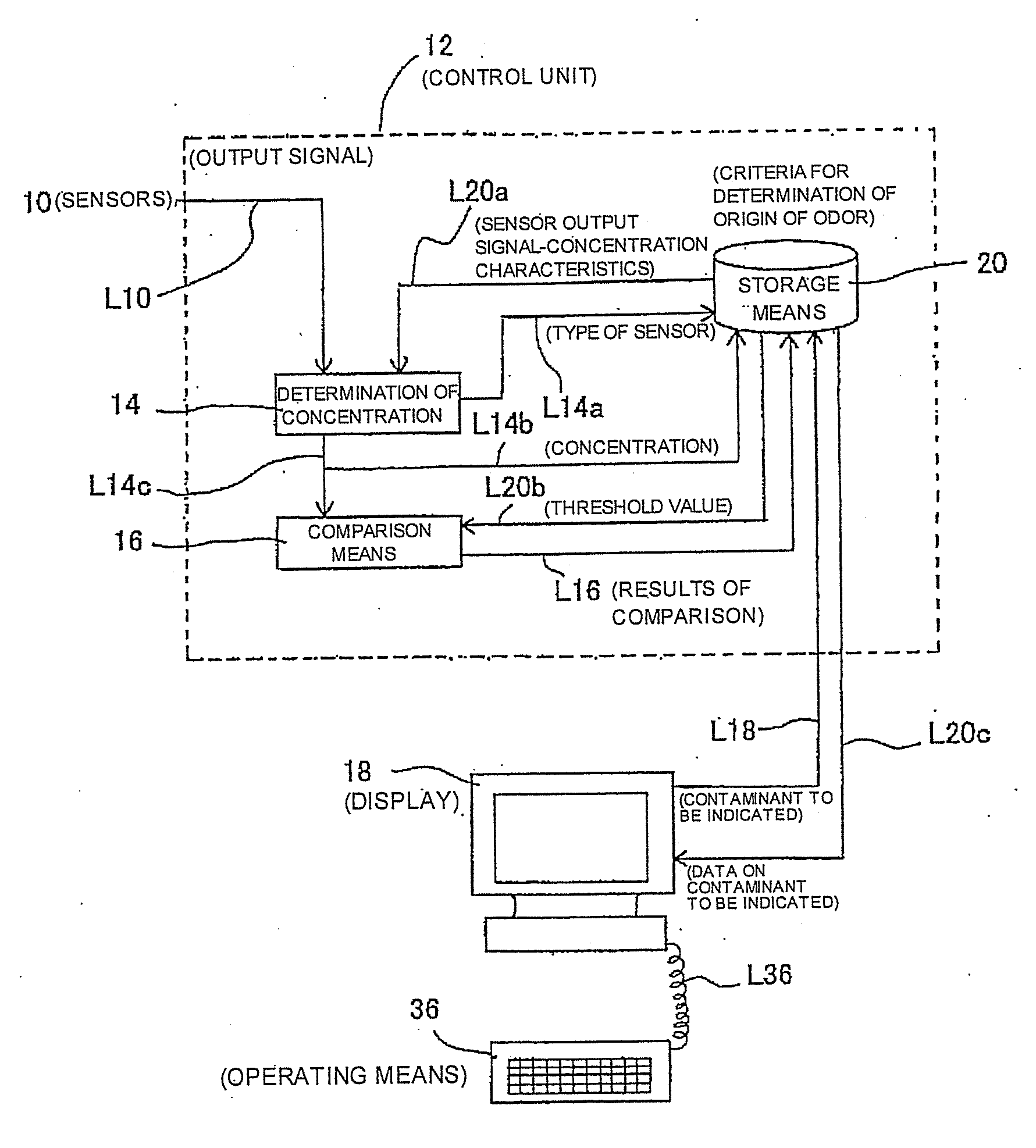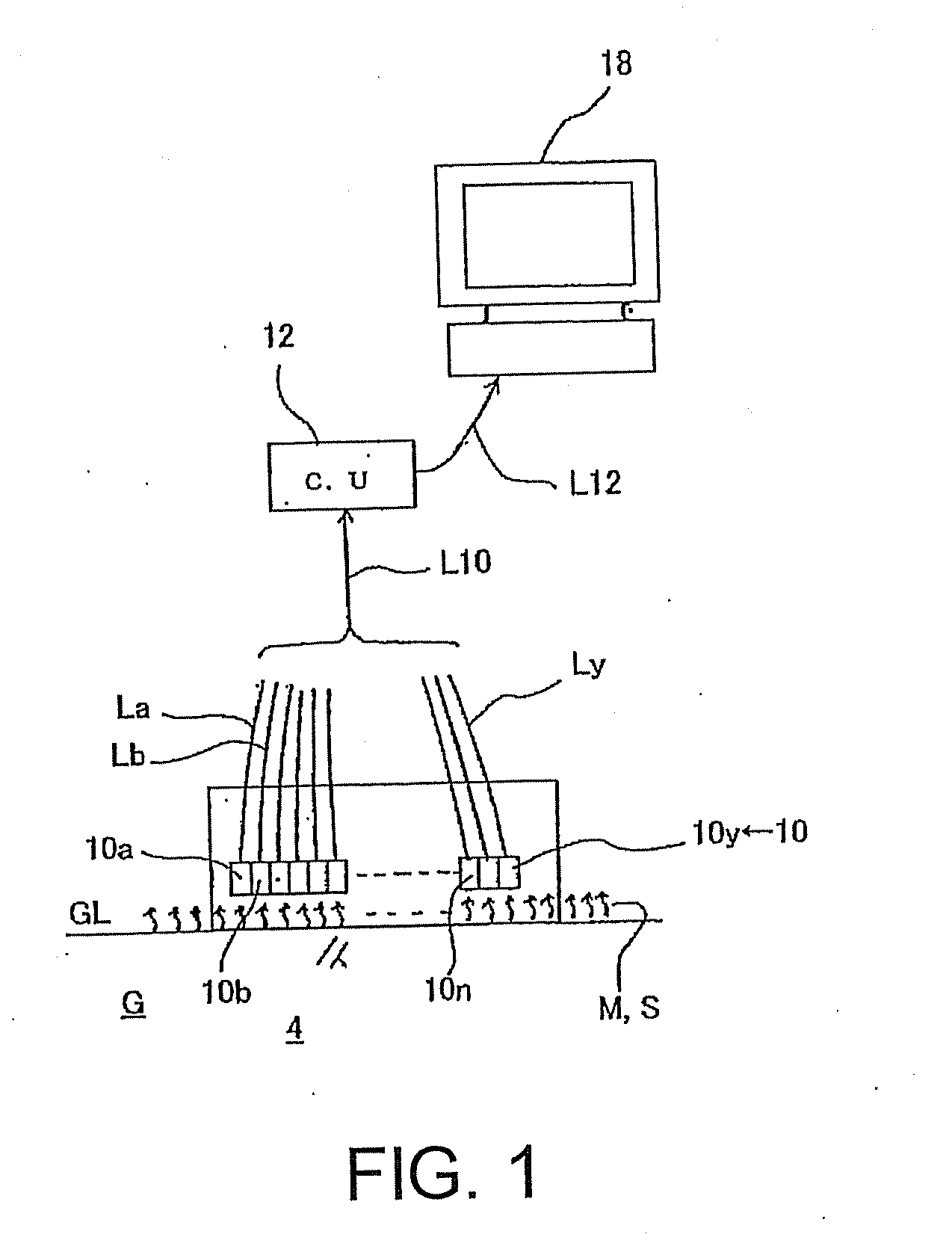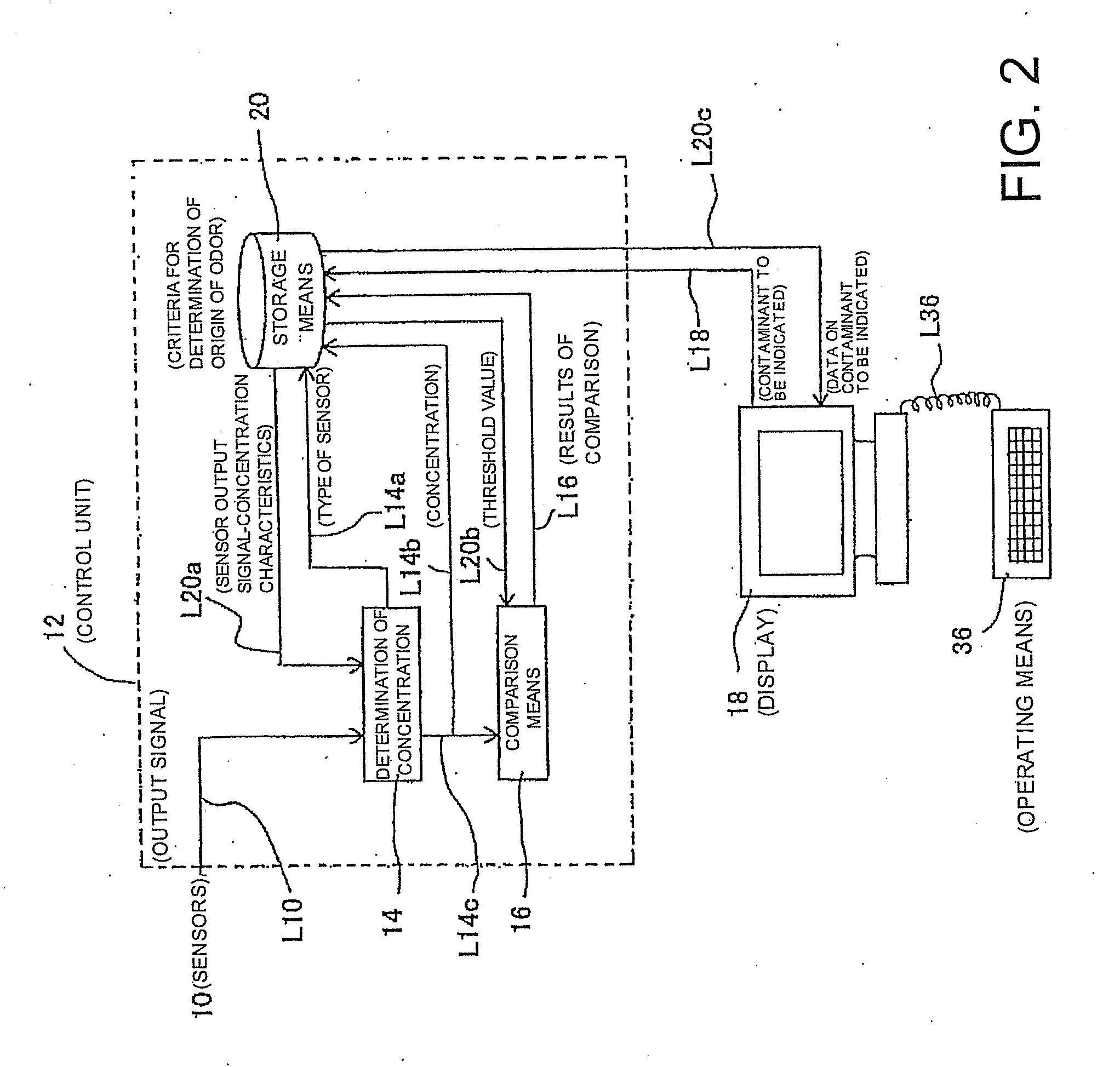Soil contamination detector and detection method
- Summary
- Abstract
- Description
- Claims
- Application Information
AI Technical Summary
Benefits of technology
Problems solved by technology
Method used
Image
Examples
first embodiment
[0028]FIGS. 1 through 3 illustrate the present invention.
[0029]Referring to FIG. 1, which illustrates an overall structure, a plurality of thin film sensors 10a, 10b . . . 10y (hereinafter, collectively referred to as 10) are provided, in a number corresponding to the number of types of contaminants to be detected, over a ground level GL of a ground G within a region 4 under contamination investigation in order to analyze odors S wafting up from the ground level GL, and the plurality of sensors 10 are connected through a signal line L10 to a control mechanism 12, which will be described in detail later. Here, the signal line L10 is formed by binding signal lines La, Lb . . . Ly for communicating detection data transmitted from each of the sensors 10.
[0030]The sensors 10 can detect the presence or absence of a contaminant, and can also detect its concentration D.
[0031]When the thin film sensors described above are used, if the concentration D of a contaminant to be detected is higher...
second embodiment
[0065]FIGS. 5 through 11 illustrate a
[0066]The ground in Japan is mostly composed by layering a plurality of different types of layers, and also in connection with soil contamination it can be expected that the conditions of contamination may differ at different depths.
[0067]In such situations, in the first embodiment shown in FIGS. 1 through 4, the conditions of contamination varying at different depths of the ground G cannot be ascertained.
[0068]According to the second embodiment illustrated in FIGS. 5 through 11, the state of contamination is investigated by detecting odors S from the ground G for each predetermined depth, and therefore this embodiment has an advantage in that the conditions of contamination varying at different depths can be ascertained.
[0069]FIG. 5 illustrates a step of drilling a borehole 6 into the ground G which is to be under contamination investigation. There is shown a state in which the borehole 6 is drilled to a predetermined depth using a boring rod 30...
third embodiment
[0099]FIGS. 12 through 17 illustrate the present invention.
[0100]The third embodiment is an embodiment which combines the first embodiment and the second embodiment. The third embodiment will also be described with reference to FIGS. 1 and 2 of the first embodiment as the overall structure and the control mechanism are generally similar to those described in the first embodiment.
[0101]In the third embodiment, first, as shown in FIG. 12, a plurality of boreholes are drilled as evenly as possible throughout the region 4 to be subjected to a contamination investigation.
[0102]Next, as shown in FIG. 13, odors of contaminants present in the ground G are measured at predetermined depths for each borehole 6 in a manner similar to those described with reference to FIGS. 5 through 11.
[0103]Then, the results obtained by measuring odors of contaminants present in the ground G at predetermined depths for each borehole 6 are input to the control mechanism 12 through the signal line 10 (FIG. 14).
[...
PUM
 Login to View More
Login to View More Abstract
Description
Claims
Application Information
 Login to View More
Login to View More - R&D
- Intellectual Property
- Life Sciences
- Materials
- Tech Scout
- Unparalleled Data Quality
- Higher Quality Content
- 60% Fewer Hallucinations
Browse by: Latest US Patents, China's latest patents, Technical Efficacy Thesaurus, Application Domain, Technology Topic, Popular Technical Reports.
© 2025 PatSnap. All rights reserved.Legal|Privacy policy|Modern Slavery Act Transparency Statement|Sitemap|About US| Contact US: help@patsnap.com



